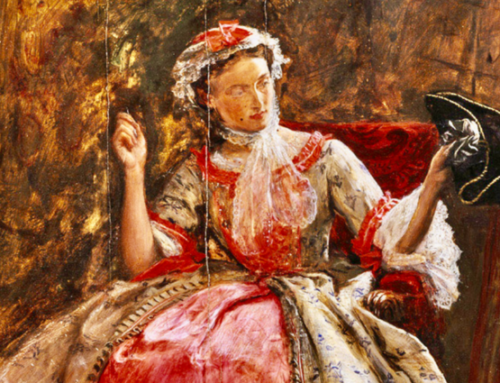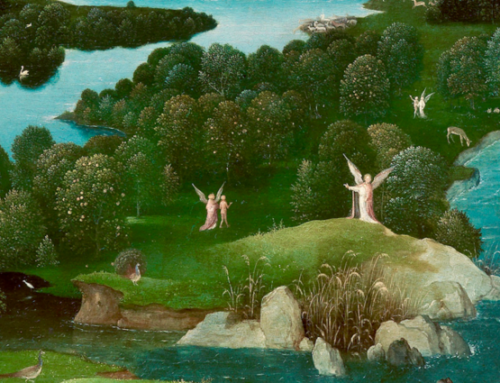 Looking for Anne of Green Gables: the Story of L.M. Montgomery and Her Literary Classic by Irene Gammel
Looking for Anne of Green Gables: the Story of L.M. Montgomery and Her Literary Classic by Irene Gammel
“You’re young, and I’m old, but our souls are about the same age, I reckon. We both belong to the race that knows Joseph, as Cornelia Bryant would say.”
“‘The race that knows Joseph?’” puzzled Anne.
“Yes. Cornelia divides all the folks in the world into two kinds—the race that knows Joseph and the race that don’t. If a person sorter see eye to eye with you, and has pretty much the same ideas about things, and the same taste in jokes—why, then he belongs o the race that knows Joseph.”
“Oh, I understand,” exclaimed Anne, light breaking in upon her. “It’s what I used to call—still call in quotation marks—‘kindred spirits.’”
—Captain Jim and Anne defining ‘kindred spirits’ in Anne’s House of Dreams
One would not suppose Lucy Maud Montgomery, the author of the Anne of Green Gables books, to be an Aristotelian. Nevertheless, one of the reasons Anne of Green Gables has sold over 50 million copies since its publication in 1908 is Montgomery’s use of Aristotle’s philia, or friendship, and her most famous protagonist Anne Shirley. An orphan, young Anne moves from family to family until ultimately settling with the Cuthberts, a brother-sister pair. They had intended to adopt a boy to help with the chores on their farm, Green Gables. Through a misunderstanding, however, they were sent Anne—a girl—instead. Despite Anne’s rocky start of well-intended misdemeanors, she soon set out to befriend the town of Avonlea, winning over her readers as well with her charming disposition, showing a stout heart throughout her constant blunders, failures, and successes.
Irene Gammel, a professor of English at Ryerson University in Toronto, has done an impressive and extensive survey of Montgomery’s life in her book Looking for Anne of Green Gables: The Story of L.M. Montgomery and Her Literary Classic. Gammel pulls from Montgomery’s books, journals, letters, and unpublished works, finding correlation between the life and friendships of Montgomery and those of Anne. Montgomery’s books are peppered by hundreds of personalities she pulled from her own life, making them significant and relatable to her readers.
As a young girl reading the Anne books, it was comforting to share similar experiences as Anne; I also found myself constantly in scrapes, was subject to fair-weathered friendships with girls, competed with the boys academically, and read nearly as much as I wrote, which was considerable in itself. The introduction of the ‘kindred spirit’ is what truly pushed the Anne books for me. A kindred spirit, according to Gammel, is “the fellow feeling, the sharing of sentiments, and the agreement of minds.” It is important for both girls and boys to feel camaraderie with a peer, a matching of minds, to have that faithful companion. Through Anne, the reader experiences a friend not easily intimidated by jealous peers or outside pressures. Anne is fiercely loyal to her ‘bosom friend’ Diana, and the fellow girls who surrounded her.
Anne was a different type of heroine than what I was used to reading in other childhood reads such as the Chronicles of Narnia or in the Betsy, Tacy, and Tib books. Anne’s spunkiness, intelligence, and resourcefulness were often countered by her fiery temper, vanity, and grudge-holding. She wasn’t perfect, but she prioritized her relationships with others, recognizing the importance of friendship throughout the novels, and willingly sacrificing preferences for the sake of a fellow kindred spirit.
A kindred spirit for Montgomery was first found in her friendship with Will and Laura Pritchard, siblings Montgomery knew growing up. Will was especially influential in Montgomery’s understanding of a true match of minds. “It was not love,” explains Gammel, “nor a sexual attraction that she had felt for Will. Rather, she desired to tell Will when something nice happened, when something nasty happened, and when nothing happened at all.” When Will died of influenza in 1877, Montgomery was devastated. Will was her closest male friend, and this type of friendship was not found again in Montgomery’s life. She did not even consider her husband to be a kindred spirit; Gammel records relationship after relationship with men, through correspondence or regular, personal interaction, but few reflected the closeness Will and Montgomery shared.
It was through one of her many regular correspondences with pen-pal Ephraim Weber that Montgomery found her voice for Anne. “Maud’s sketch of her own character for the eyes of Ephraim cannot be overestimated in creating the bridge to shaping Anne. In several letters she described herself as toying with a more complex side of life that transcended Sunday school tradition.” Through this exchange of letters, Montgomery explored a more provocative side of her personality in order to bring out “a heroine with richer blood”. Earlier writings indicate Montgomery’s tendency to write about well-behaved heroines, living a life similar to Montgomery’s own safe haven. But life ought not to be like literature, and art should be a reflection of what could be rather than what is. As Gammel tells the reader, Montgomery wrote much like she lived her life. “Such pleasure she had in writing! Would this be the novel to bring her to fame? It was like flirting with a suitor without the pressure of serious commitment.”
It was truly Montgomery’s female friendships, however, which helped bring Anne of Green Gables to flesh. Her closest friends throughout her life included Fredericka Campbell, Nora Lefurgey, Penzie Macneill, and Laura Pritchard, whom Gammel is quick to lament how little “attention has been paid to this rich company of women, neither in biographies nor in Maud’s own legend of how Anne came about.” She further speculates that the “powerful pull these bosom friends exerted on Maud is reflected in her celebration of the friendship between Anne and Diana.” Montgomery considered these women to be her kindred spirits. Montgomery’s relationships with these women helped her reach and grow outside herself, especially as Montgomery was prone to bouts of loneliness on the island and elsewhere in remote Canada.
It is misleading to say that the Anne books are only for children, although they are advertised as so, and I myself discovered them as a child. There are seven books in the Anne of Green Gables series; the first five are about Anne, and the last two feature Anne, but focus more on her children and their lives. The books have a sophisticated style and tone, and Montgomery does not shy away from mature topics like love, death, forgiveness, and fate. She assumes her readers are well-read, often citing snippets of poems by many popular poets like Longfellow and Tennyson, whose bulk of work may be unfamiliar to many readers today.
The books serve as an anthropological venture, with Montgomery giving the modern reader a look at the small-town society, a panoramic view of political and social aspects in 19th century Canada. Like Tolstoy and Dickens, Montgomery creates a surprisingly wide array of dynamic and believable characters. Montgomery “demanded her book to be good literature, stimulating her with its language, its images, its ideas—and most important, its lively characters.” Montgomery re-created her own familial and historical ties in the Anne books, and Gammel rightly takes note of these outside influences on Montgomery’s life. Looking for Anne of Green Gables broadly covers nearly every aspect of Montgomery’s life, allowing the seasoned Anne reader to draw their own conclusions and theories to why Montgomery may have shaped her stories the way she did based on the people she knew and friendships she cultivated. It also gives the Anne novice a taste of Avonlea through this study of Montgomery’s life, peaking their interest in the Anne books, books they may have never considered reading before.
Aristotle saw love and friendship as one soul inhabiting two bodies. Montgomery’s version of love was much more fanciful, with the idea of kindred spirits seemingly being applied only to friends. She did not even experience this type of soul sharing with her husband, and it seemed the one lasting thing Montgomery could give Anne was a kindred spirit in her future husband. Gammel invites the reader to share her love of Anne, as well as develop a deeper appreciation for the woman who shaped her. It is through Montgomery that Anne’s own spirit emerges, and readers find themselves feeling like a kindred spirit with Anne and Montgomery, as they amble along together between the pages.
The Imaginative Conservative applies the principle of appreciation to the discussion of culture and politics—we approach dialogue with magnanimity rather than with mere civility. Will you help us remain a refreshing oasis in the increasingly contentious arena of modern discourse? Please consider donating now.







Leave A Comment